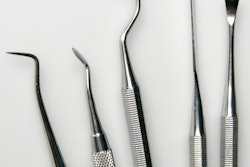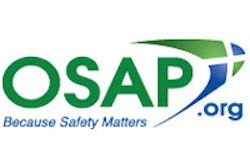
"Patient safety," "culture of safety," and "first do no harm" -- these are terms synonymous with a safe patient experience. However, in recent months several infection-control breaches have been reported in dental healthcare settings, which have affected patients and the dental community.
Examples of recent, well-known infection-control breaches include the following:
- The washing and reusing of single-use gloves
- Reuse of dental instruments without proper cleaning and/or sterilization
- Lack of spore testing as part of the sterilization monitoring process on the appropriate schedule
- Reuse of single-use items, including impression trays and saliva ejectors
- Improper use of cold sterile solutions (immersion chemical sterilants)
While these are extreme examples of lapses in basic infection-control principles, it's a reminder to all dental healthcare personnel to stop and evaluate how safety is addressed at each patient encounter.
 Karen Gregory, RN.
Karen Gregory, RN.Why does all of this matter? Dental healthcare providers enter the profession to help, not to harm; patients trust they will not leave a dental visit facing the question of whether the care they received met the acceptable standards.
I have the privilege of working with many dental practices, and must say that every person I meet wants to do things the "right" way. Just recently I visited a practice and observed cassettes that had been removed from the sterilizer and the packaging was wet, which directly impacts the sterility of the instruments to be used in patient care. Workers were also setting up the bracket trays with instruments well in advance of the patient's arrival, leading to the potential for cross contamination of the instruments, rather than opening the instruments when the patient is seated in the chair.
This practice was state-of-the-art, extremely organized, and meticulous in its appearance. So I wondered, where did the breakdown occur?
Answers I often hear include staffing challenges, increased patient load to make up for reduced reimbursement from payors leading to less "down" time, and lack of education and training. I am so often surprised when staff responds they were not even aware of basic safe infection-control procedures such as those mentioned earlier. This practice responded immediately to the observations, because, as mentioned before, they wanted the best care possible for their patients.
If ever faced with the question, "Is your dental practice safe for workers and patients," could you answer most assuredly "YES"? The next question is very important: Could you guarantee the care you are providing meets acceptable standards?
That question most always causes a pause in the conversation. Many believe they are providing the safest dental visit possible, but when they drill down to the basics, they find workers have implemented shortcuts such as those mentioned above, which may negatively impact the worker and the patient, or snowball into larger breaches like those reported in the national news.
Standards
What are considered acceptable standards, just what are the basics, and "Honestly, is there someone who can help me with all of this?" This is a very typical response when working with dental professionals. The U.S. Centers for Disease Control and Prevention (CDC) guidelines for Infection Control in Dental Health-Care Setting--2003 establish acceptable standards of practice for the dental industry. This document provides the guidance needed to provide safe dental care to patients and also provides a safe environment for workers. Guiding principles are provided on such topics as exposure prevention, hand hygiene, instrument processing, environment infection control, and dental unit water line treatment.
“I have the privilege of working with many dental practices, and must say that every person I meet wants to do things the 'right' way.”
Another valuable resource is the Organization for Safety, Asepsis and Prevention (OSAP), of which I have been a member for five years and now serve on its board. OSAP, whose mission is to be the world's leading advocate for the safe and infection-free delivery of oral healthcare, is a recognized authority of and voice for infection control and patient safety. OSAP provides a number of checklists based on the CDC guidelines that oral healthcare providers can use to evaluate the level of safety in their practices. All the checklists are available at the OSAP website for free download.
Utilizing the OSAP checklists to identify strengths and opportunities for improvement is a critical first step in the infection prevention process, but action must be taken on any gaps that are identified. It is also crucial to remember the review process is ongoing, not just a one-time event. When working with clients, I also encourage observation of worker behaviors to evaluate their understanding of safety principles. I frequently find workers can respond with the appropriate answer to most any infection-control question posed, but their actions reflect a different understanding that could place the worker or the patient at risk. Combining evaluation with instruction will provide a great foundation for ensuring worker and patient safety, but there is much more in creating a culture of safety. The entire team must be focused on the goal of a safe dental visit.
Involving the whole team, including office personnel, in the safety process will ensure success in creating a safe environment of care. Providing instruction on how to resolve gaps in basic infection-control principles will allow change to begin.
Another critical component to success is worker education. When education is mentioned it seems automatically there is the assumption this education will impact staffing and will incur great cost for the practice. This is by far not the case: OSAP offers a bimonthly training newsletter "Infection Control in Practice Team Huddle" that dental practices and dental education programs can use to keep infection prevention and safety as a primary focus of all clinical care.
This easy-to-use newsletter provides updates on the latest protocols and risks, outlines real-world scenarios that have occurred in the delivery of dental care, and engages the team member in providing solutions to basic infection-control challenges. The newsletter includes exercises to test knowledge and develop solutions to create a safer workplace. Each newsletter also comes with a low-cost continuing education test based on the theme of that month's newsletter.
Leadership in any healthcare organization, including dental healthcare practices, is essential to create a culture of safety among personnel. Key elements include the following:
- Clear policies and standard operating procedures
- Education and site-specific training
- Adequate resources
- Reinforcement of the ethical responsibilities and roles of each staff member in ensuring patient and provider safety
- Leading by example
Our goal as professionals is to ensure the safest dental visit for every encounter, both for the patient and for the worker. While challenges may abound, safety must remain a priority -- because safety matters!
As OSAP celebrates its 30th year in service to the oral care community, an annual digital subscription of "Infection Control in Practice" is available for only $30. All OSAP members receive the newsletter for free and many other valuable training resources. Visit www.OSAP.org to subscribe or join.
Karen Gregory, RN, is a board member for the Organization for Safety, Asepsis and Prevention. She is the director of compliance and education at Total Medical Compliance and a Hu-Friedy Thought Leader. She can be reached at [email protected].
The comments and observations expressed herein do not necessarily reflect the opinions of DrBicuspid.com, nor should they be construed as an endorsement or admonishment of any particular idea, vendor, or organization.



















